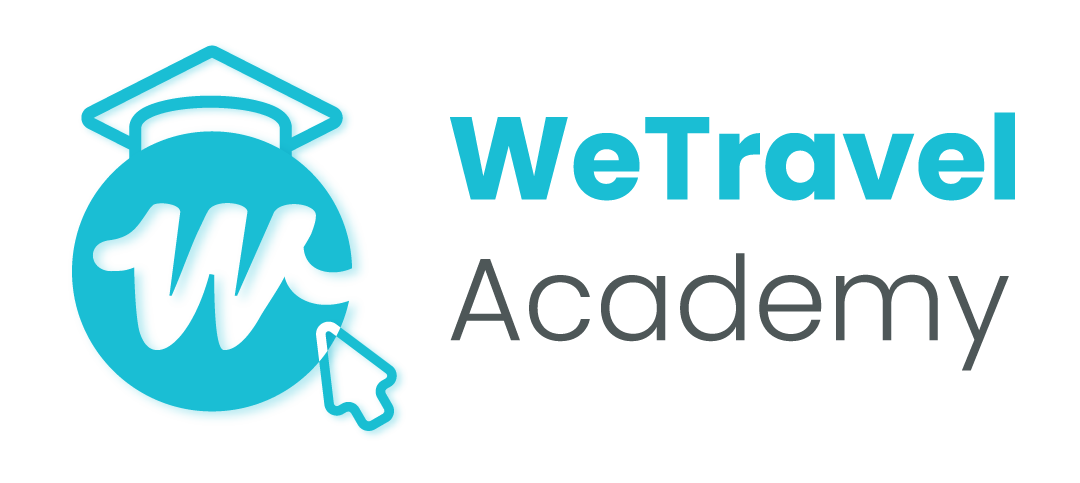Welcome to WeTravel’s four-part series on building a digital presence for travel companies.
We have written this for individual organizers, tour operators, destination management companies, travel agents, and group or multi-day trip organizers who want to improve how they are seen across the internet.
Throughout the series, we will cover everything that you as a travel provider need to know about creating space for your brand online. In a nutshell, you will:
- learn why it is critical for your business to have an internet presence
- get pointers on the ideal website anatomy
- discover the do’s and don’ts of social media
- find out the best practices around producing and sharing content
Each part will have a checklist of points to action or optimize, which will help you to develop your business' digital footprint.
Up first in the four blog posts is an introduction to the subject.
Part One: Contents
To get you started and set a baseline to work from, we cover the following sections in this post:
- What does it mean to have an online presence?
- Why is it important to have a digital presence?
- How do customers expect to engage with your business online?
- A list of places where your company should have a presence.

Introduction To Building A Digital Presence For Travel Companies
1. What Does It Mean To Have An Online Presence?
Your online or digital presence is how your company appears online. It is what your clients discover when they search for your name on the internet.
This includes platforms and content that you control, like your website, social media, and digital ads. But also some that you don’t, such as online reviews.
In short, your digital existence is part of the bigger picture involved in building your reputation, making your offering visible, and increasing brand awareness.
2. Why Is It Important To Have A Digital Presence?
When COVID-19 hit, offices moved home. It meant an overhaul in general operational processes and an upgrade to the business technology stack for many. At short notice, teams had to get to grips with working remotely, taking part in virtual meetings, and managing collaborative work efforts in a distributed workforce.
This shift online happened to consumers too. Although the internet has always been a means to do travel research and make bookings, the pandemic has accelerated the widespread adoption of e-commerce, in particular.
In many industries and even countries where e-commerce wasn't prevalent before, new types of businesses, products, and customers have suddenly become available online. People who previously didn’t know how or who weren’t comfortable with researching, communicating, and transacting digitally, are now doing so.

Experts now say that the digital transformation is likely here to stay. We can expect to see a long-term shift to online purchase transactions for everything from everyday necessities to luxury goods and services.
For travel businesses, it means adapting to this shift in consumer behavior or risk getting left behind. Building a digital presence so that customers know where to find you, have an enjoyable online experience, and can engage with your brand is critical.
3. How Do Customers Expect To Engage Online With Travel Businesses?
Although these are broad strokes, your clients’ online interaction with your business might run along these lines:
Travelers start by using the internet to find inspiration and research their next trip. They want to see beautiful images and inspiring videos. They also want to read up about everything and take in as much information as possible. (dreaming)
At a certain point, they get serious, narrow down options, and decide which trip to take. They then shop around to find the best deal and a travel company whose values they connect with. (planning)
Before committing, they might want to communicate with the company online to iron out details. After that, they are ready to make their own reservation.
With a booking completed, they expect to receive all documentation relating to their trip digitally. This is also where they can sign forms and submit documents.
In the time leading up to the trip, they might look for more specific research relating to the destination and planned activities. If they have any issues or questions for their travel providers, they ask them online. (booking)

Leading up to and during the trip, they want to receive timely updates and relevant information that pertains to their travel. (experiencing)
Once home again, they tag any photos and videos, leave reviews, and settle any final outstanding accounts. (remembering)
The journey sequence goes - dreaming, planning, booking, experiencing, and remembering moments. You need to be there to capture their interest in those moments. In section four below, we discuss exactly where to do that.
4. Where Should Companies Have A Presence?
People may find you online because they know your company name and do a direct search for it.
Or they might come across your services when they google specific keywords.
They could also hear about you from someone they know or click on an advert that they see.
Regardless of where they come from, these potential clients will also be at different stages of their booking journey, which means that they have different navigational, informational, and transactional needs to address.
All of these factors have a part to play in where you build your digital presence. Our list below tackles these considerations to provide insights on the places where your travel company should be seen.
Website
This is where it all begins and ends. Your website is a space where clients can discover your business online, find inspiration and research, communicate with you and make a booking, sign and upload forms, get updates, tag their content, and leave reviews.
Social Media

Your social channels are a space where you can develop relationships and maintain existing ones. You can inspire and inform, as well as reach new people through advertising.
Travelers will tag your business in their social content, and you can share real-time trip updates on your relevant accounts.
Depending on your ideal clientele and location, Facebook, Instagram, YouTube, Pinterest, Twitter, and LinkedIn are the platforms to focus on.
Google My Business & Google Maps
This ever-important listing gives you better visibility on the search engine. It is useful for companies with a physical brick and mortar office as it puts you on Maps and delivers up your listing in local search results, which are typically easier to rank for.
OTAs and Travel Agents
For newer businesses that aren't yet that well known, listing with OTAs or travel agents can put your product in front of a much larger customer base.
Review Platforms
Set up or claim your business account on the major review platforms, including Google, your website, TripAdvisor, Booking.com, Yelp, and Facebook.
Before booking, travelers who have no personal connection to your business will want to hear about the experience others have had with you. It is important to monitor these platforms and respond where necessary.
Directory Listings
These could be local tourism websites, directory listings for your town or state, professional tourism bodies, businesses in your partner network, and so on.
Google Ads and PPC Advertising
When you want to generate leads quickly, Google Ads and PPC advertising can be a solution. Set up a campaign, decide on a budget, play your cards right, and you can land up with new customers.

Keep A Look Out For The Next Article In The Series
In the next article of our four-part series on building a digital presence for travel companies, we will focus on travel website anatomy. Specifically, what makes for a great website that your customers find useful, are happy to engage with, and keep coming back to.
New resources, straight to your inbox
We’re committed to your privacy. WeTravel uses the information you provide to us to contact you about our relevant content, products, and services. You may unsubscribe at any time.




